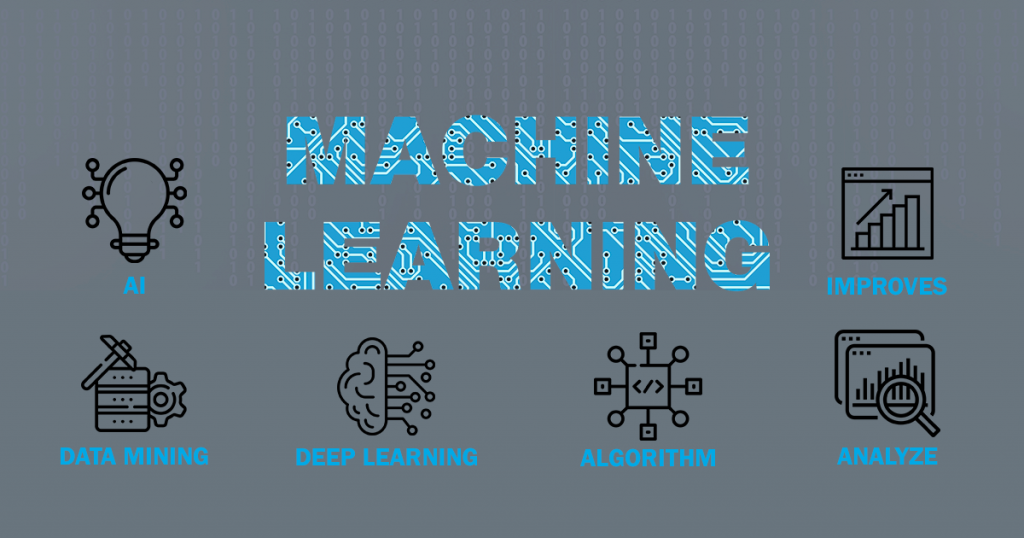A.I. is on everyone’s mind nowadays. Some companies have gone in at full speed and revamped themselves with technology. Others are considering whether they want it or not, whether the investment is worth it and where to start. Employees fear it. And they are not the only ones. Even people developing tech are apprehensive about the rise of the malicious A.I. we all know so well from movies.
Machine learning development
But what is this A.I.? In the case of companies looking to improve their workflows and to become more digital it is usually machine learning development, a branch of A.I. Machine learning development, compared to more classic A.I., is a set of algorithms that can learn with training and a lot of data, a vast amount of structured and labeled data to be exact. Specialists use it to get the system ready to identify different things, to label in turn, to find patterns, to uncover insights in the data inputted into the system. Machine learning development is very dependent on humans for the training portion of their functionality. First, specialists set the stage, so to speak, by deciding on the different features and criteria they want to teach it. Then feed into the system data that need to be structured and clean.
Algorithm and data
The mechanism has three broad steps. A decision process during which the algorithm will produce an estimation or a prediction based on inputted data. An error function that evaluates the accuracy of the prediction, and a model optimization process that helps readjust the whole system for better, more accurate outcomes.
Different types of data are necessary for good functionality depending on the type of algorithm chosen, the training data, input data and feedback. In some cases, having all three will make sure there are more successes than failures. The technology is not failproof, but rather a trial-and-error endeavour that companies need to commit to in order to reap benefits.
Human input
Engineers determine the hierarchy of features so they can decide which data to input, and they pre-program the defined criteria the system will use to make sense of the data given. They also retrain the system if innacurate predictions occur. The system learns continuously, but not without help. Judgement is still the prerogative of humans who possess common sense and a general understanding of the world. They are able to think of multiple futures and consider both short and long-term implications of various actions. Humans are still the only ones able to decide on multiple things at once, evaluate trade-offs and understand the world in a dynamic way. But using advanced technology to process data can augment their capabilities and help them make better and faster decisions.
The value of machine learning development for business
In this day and age being ahead of the crowd and prepared for the future gives businesses staying power. Companies that are courageous and take steps toward the adoption of A.I. in any form are building a bridge to the world of tomorrow. They are ensuring that they will not have such a hard time in the face of competition and of unexpected changes. Well interpreted and analyzed data eases understanding of the what, the why, the going to, and the should. Which means data can give insight about the past activity a company has had. It can uncover explanations for different outcomes, show what has worked and what hasn’t, can give direction for the future, and offer options for how to get there.
Functionality
Machine learning systems are a tool for making predictions, correlations, classifications, recommendations, all things that can give an advantage in the market. Its output depends on a variety of factors. A crucial one is the quality of the data the company possesses. The system parses the input and produces data that didn’t exist before and delivers knowledge that can be very useful for the company. It can help it to implement changes or take appropriate action to secure customers, or avoid delays and downtime. Understanding what their next steps must be and ensuring streamlined workflows are also in its power.
When an organization decides to use machine learning it needs to think about the value the prediction will bring and if it will offer it an edge over the competition. The problem machine learning is applied to must be complex enough to justify the investment in money and time that the technology requires. If a set of rules can dramatically improve the workflow than that is the answer and not cutting-edge technology.
The role of a machine learning system is to create a repeatable, reliable, and executable process. Companies should use it in places where the context and environment are known, but where there is no analytical solution applied yet. Using one might dramatically increase productivity, awareness of situation, or unknown patterns that might make work more efficient.
Factors for success
For a successful implementation you must define use cases as well as metrics for measuring performance established, to be able to see, at any moment, if the system is bringing in value or not. Then a well-designed learning algorithm is necessary and a learning environment for it. At times this is a simulator, at others a digital platform to give the system the opportunity to learn in real-time.
Organizations must be prepared to invest in resources and specialized infrastructure if they want to scale out their machine learning development pilot projects. However, that does not mean automating everything and completely getting rid of human employees. A clear vision of human and machine working together has proven to be the most successful one so far. Technology really shines when it maximizes human work.
Use cases for machine learning development implementation
The way companies use machine learning development varies and depends on individual needs and the creative utilization of data. Having a vision of how this technology is able to bring your company to the future is the most important ingredient.
E-commerce and not only
An appropriate algorithm can offer customer lifetime modeling, which shows the company who are its most important customers, what their behaviour is. It can predict how they are going to behave in the future. All of which allows e-commerce companies to be a step ahead and take action to maximize the revenue from those customers.
Churn modeling deals with classifying types of customers, for example, give risk scores and identify what drives certain behaviours. The information can be then used to optimize discount offers, different types of campaigns and other targeted marketing projects. Here are some ways it can accomplish that.
Dynamic pricing establishes price based on level of interest, type of customer and engagement patterns. The data to input here refers to customer willingness to pay for certain products or services.
Customer segmentation makes it easier to create campaigns for a type of customer. This requires a lot of data related to demographics, browsing behaviour, and affinity with brand and product.
Image classification assigns labels to images from a set it has already been trained on. It is useful in 3D construction plans based on 2D designs, in social media photo tagging and other use cases.
All of these situations can improve customer experience and lower costs. An algorithm that learns constantly is able to offer personalized support without human involvement. It even reduces workload in hiring by scanning CVs and allowing humans to made decisions only at higher levels. Once a small pool of candidates has been chosen using relevant keywords.
Other industries
Complex logistics problems that combine packing, routing, scheduling need machine learning development solutions. Applied correctly it can speed up clinical trials, by being able to process data much faster than a team of humans.
In manufacturing it is ideal for perfecting production of advanced electronics, like computer chips and reducing errors, or by detecting errors earlier.
The variety of machine learning development applications spans industries from agriculture, where it can support scheduling and production allocation, or deal with warehouse logistics, to oil and gas, telecom. In the the financial world, pharmaceuticals, medicine it acts as a key component in the way companies will speed innovation.
As a system that learns from examples and that can teach itself through trial and error it has the ability to propose new solutions after having modelled a huge number of possibilities.
These are just a few ways in which it can and has been used so far. Yet the number of places and situations companies can implement it in is of course very large, and a task for human creativity. Even if machine learning development is a set of very specific tasks completed very fast, the amount of possibilities it can offer humans in the long run is hard to quantify.
Conclusion
Machine learning development is gaining more and more traction because when applied correctly it gives big business boosts. It is, of course, early days and research into making these systems better is ongoing. But even now with its current capabilities, it is of immense value when it releases people from tiresome, monotonous tasks. On top of that the knowledge it creates is enabling innovation that was not possible before.

